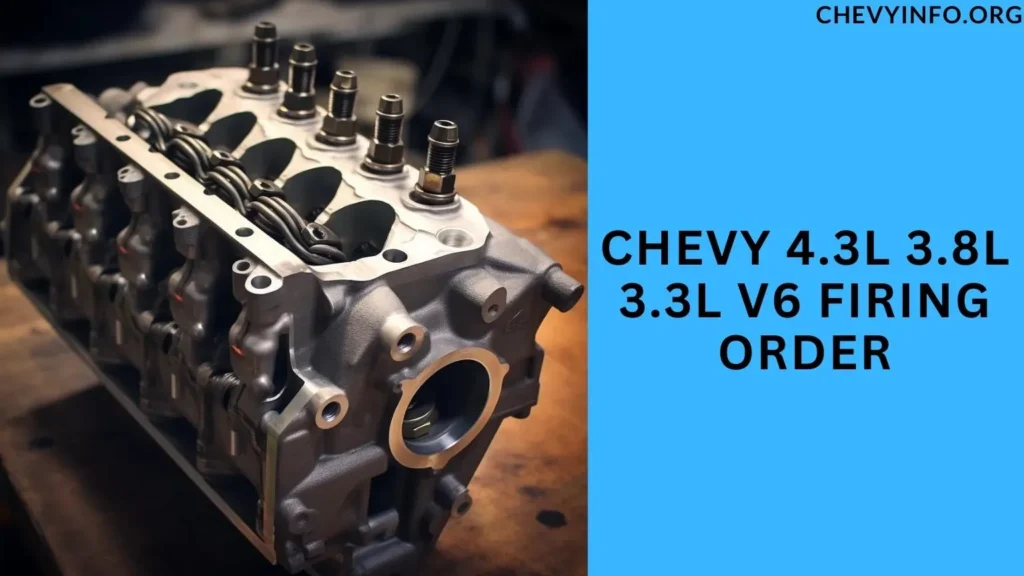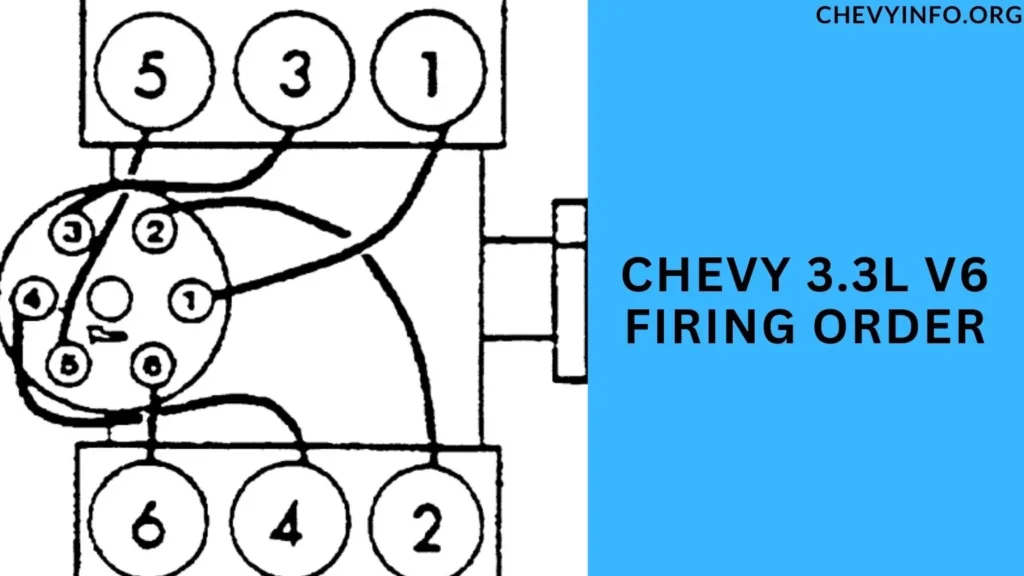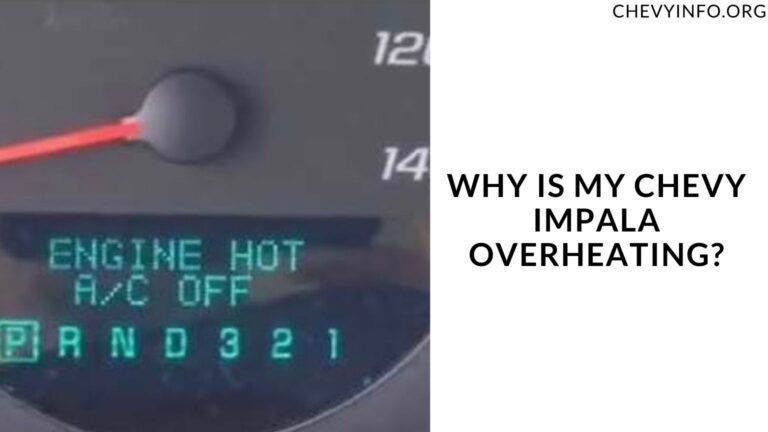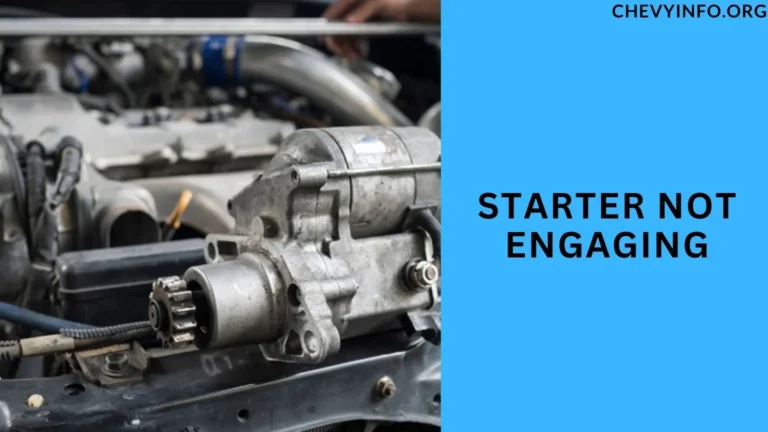Chevy 4.3L 3.8L 3.3L V6 Firing Order & Cylinder Numbers 2024
In the realm of automotive engines, understanding the firing order is crucial for maintaining optimal performance and efficiency.
This article delves into the firing order specifications of three prominent Chevy 4.3L 3.8L 3.3L V6 Firing Order variants.
We’ll explore how the firing order impacts engine functionality and what drivers need to know to ensure their vehicles run smoothly.

Introduction to Chevy V6 Engines
Chevrolet’s V6 engines are renowned for their balance of power and fuel efficiency. These engines are commonly found in a range of Chevy vehicles, from trucks to sedans, offering a versatile performance across different driving conditions.
Understanding Chevy 4.3L 3.8L 3.3L V6 Firing Order in Engines
The firing order of an engine refers to the sequence in which each cylinder receives a spark and ignites the fuel-air mixture. This sequence is critical for maintaining engine balance, smooth operation, and power delivery.
Importance of Firing Order in Performance
Correct firing order ensures that the engine operates efficiently, minimizing vibration and maximizing power output.
Incorrect firing order can lead to rough idling, reduced performance, and potential engine damage over time.
Chevy 4.3L V6 Firing Order
The Chevy 4.3L V6 engine is a workhorse known for its reliability and performance. Its firing order sequence, typically 1-6-5-4-3-2, ensures smooth operation and balanced power delivery across all cylinders.
Explaining the 4.3L V6 Engine
The 4.3L V6 engine is commonly used in Chevy trucks and SUVs. Its design prioritizes torque and towing capability, making it a favorite among drivers who need robust performance.
Detailed Firing Order Sequence
The firing order 1-6-5-4-3-2 means that cylinders 1, 6, and 5 fire in succession, followed by 4, 3, and 2. This sequence is optimized for engine balance and performance.
Significance of Correct Firing Order
Maintaining the correct firing order is essential for optimal engine function. Any deviation can lead to misfires, decreased power, and potential engine damage.
Chevy 3.8L V6 Firing Order
The Chevy 3.8L V6 engine is known for its smooth operation and respectable power output. Its firing order, typically 1-6-5-4-3-2, plays a crucial role in its performance characteristics.
Overview of the 3.8L V6 Engine
The 3.8L V6 engine is a versatile option used in various Chevy models. Its balance of power and efficiency makes it a popular choice among drivers.
Firing Order Specifications
The firing order 1-6-5-4-3-2 ensures that cylinders fire in a specific sequence, optimizing engine balance and performance across different driving conditions.
Impact of Incorrect Firing Order
Incorrect firing order can lead to rough engine operation, decreased fuel efficiency, and potential damage to engine components. Regular maintenance and adherence to the correct firing order are essential for longevity.
Chevy 3.3L V6 Firing Order

The Chevy 3.3L V6 engine offers a blend of performance and fuel economy. Understanding its firing order, typically 1-6-5-4-3-2, is crucial for maintaining its reliability.
Brief Description of the 3.3L V6 Engine
The 3.3L V6 engine is designed for efficiency without compromising on power. It strikes a balance suitable for daily driving and occasional performance needs.
Firing Order Configuration
With a firing order of 1-6-5-4-3-2, the 3.3L V6 engine ensures smooth operation and balanced power delivery, enhancing the driving experience for Chevy enthusiasts.
Consequences of Firing Order Errors
Deviation from the correct firing order can result in engine misfires, decreased performance, and potential mechanical issues. Regular inspection and maintenance are recommended to prevent such problems.
Common Issues with Firing Order
Identifying problems related to firing order is crucial for maintaining engine health. Common symptoms of firing order issues include rough idling,
engine hesitation, and decreased fuel efficiency. Diagnostic tools and professional inspection can pinpoint and resolve these issues effectively.
Here are some of the most prevalent problems associated with firing order:
Misfiring Cylinders
One of the primary issues stemming from incorrect firing order is cylinder misfires. When cylinders do not ignite in the proper sequence, it can lead to incomplete combustion, resulting in engine misfires.
This can cause rough idling, hesitation during acceleration, and a noticeable decrease in engine power. Poor Fuel Efficiency:
Incorrect firing order can also contribute to poor fuel efficiency. When cylinders fire out of sequence or at the wrong time, fuel may not burn efficiently, leading to wasted fuel and decreased miles per gallon (MPG).
This not only affects the vehicle’s performance but also increases fuel costs for the driver.
Engine Vibrations and Rough Running
A disrupted firing order can cause engine vibrations and a rough-running engine. This can be felt throughout the vehicle, particularly at idle or during low-speed operation.
These vibrations not only affect comfort but can also indicate underlying issues that need attention.
Increased Emissions
Inefficient combustion due to incorrect firing order can lead to increased emissions. When fuel doesn’t burn completely, it results in higher levels of unburned hydrocarbons and other pollutants being released into the environment.
This can contribute to environmental concerns and may cause a vehicle to fail emissions tests.
Potential Engine Damage
Prolonged operation with an incorrect firing order can potentially damage engine components.
For instance, consistently running with misfiring cylinders can lead to overheating of the catalytic converter,
premature wear on spark plugs and ignition coils, and even damage to the engine’s internal components over time.
Diagnostic Challenges
Identifying firing order issues can sometimes be challenging, especially for less experienced vehicle owners.
The symptoms, such as rough running or loss of power, can overlap with other engine problems, making it important to conduct thorough diagnostic tests to pinpoint the exact cause.
Ignition System Problems
Firing order issues can also put a strain on the vehicle’s ignition system. Components like spark plugs, ignition coils, and wiring may experience increased wear and failure if the firing order is consistently incorrect, leading to additional maintenance and repair costs.
Maintenance Tips for Chevy V6 Engines
To ensure optimal performance and longevity of Chevy V6 engines, drivers should adhere to regular maintenance schedules.
This includes periodic inspection of spark plugs, ignition system, and engine components related to firing order.
Here are some maintenance tips specifically tailored for Chevy V6 engines to ensure optimal performance and longevity:
- Follow the Manufacturer’s Service Schedule: Adhere to the recommended service intervals outlined in your Chevy vehicle’s owner’s manual. This includes regular oil changes, filter replacements, and scheduled inspections to keep the engine running smoothly.
- Inspect and Replace Spark Plugs: Spark plugs play a crucial role in the ignition process. Inspect them regularly and replace them as needed to maintain efficient combustion and prevent misfires. Follow the manufacturer’s recommendations for spark plug replacement intervals.
- Check Ignition System Components: Along with spark plugs, ensure that ignition coils, wires, and distributor (if applicable) are in good condition. Faulty ignition components can lead to firing order issues and reduced engine performance.
- Monitor Engine Coolant: Proper engine cooling is essential for V6 engine longevity. Regularly check coolant levels and quality. Top up coolant as needed and flush the cooling system according to the maintenance schedule to prevent overheating and engine damage.
- Inspect Belts and Hoses: Belts and hoses play vital roles in engine operation, such as driving accessories like the water pump and alternator. Check for signs of wear, cracks, or leaks and replace worn-out belts or hoses promptly to prevent unexpected breakdowns.
- Maintain Fuel System: Keep the fuel system clean and efficient by using quality fuel and additives as recommended by Chevy. Periodically inspect fuel filters and consider professional fuel system cleaning services to remove deposits and improve fuel economy.
- Monitor Engine Oil: Regularly check engine oil levels and quality. Change the oil and oil filter according to the manufacturer’s recommendations. Clean oil lubricates engine components and helps maintain optimal performance.
- Address Firing Order Issues Promptly: If you notice symptoms of firing order problems, such as rough idling or engine hesitation, don’t ignore them. Have the engine professionally diagnosed to identify and correct any firing order issues to prevent further damage.
- Inspect Exhaust System: Check the exhaust system for leaks, damaged components, or excessive corrosion. A properly functioning exhaust system is crucial for engine performance, emissions control, and overall vehicle safety.
- Keep Air Filters Clean: Clean air filters promote efficient engine combustion by ensuring a proper air-fuel mixture. Replace dirty or clogged air filters regularly to prevent engine strain and improve fuel efficiency.
People also ask
What is the firing order on a 4.3 L V6?
The firing order on a 4.3L V6 engine is typically 1-6-5-4-3-2.
What is the distributor firing order for the 4.3 V6 Chevy s10 engine?
The distributor firing order for the 4.3L V6 Chevy S10 engine is 1-6-5-4-3-2.
Did Chevy make a 3.8 V6?
Yes, Chevrolet did produce a 3.8L V6 engine.
Is the 4.3 V6 a Vortec?
Yes, the 4.3L V6 engine from Chevrolet is part of the Vortec engine family.
Conclusion
In Conclusion, Understanding the firing order specifications of Chevy V6 engines is fundamental to maintaining their performance and reliability.
By following recommended maintenance practices and addressing firing order issues promptly, drivers can enjoy a smooth driving experience with their Chevy vehicles.

Henry Worner, a seasoned automotive expert with over 13 years of experience in car repair, maintenance, and performance enhancement, ChevyInfo.org was born out of a passion for Chevrolet vehicles. Henry’s deep-rooted love for everything Chevy has driven him to create a platform where fellow enthusiasts, car owners, and anyone interested in Chevy cars can find valuable insights, tips, and guidance.






